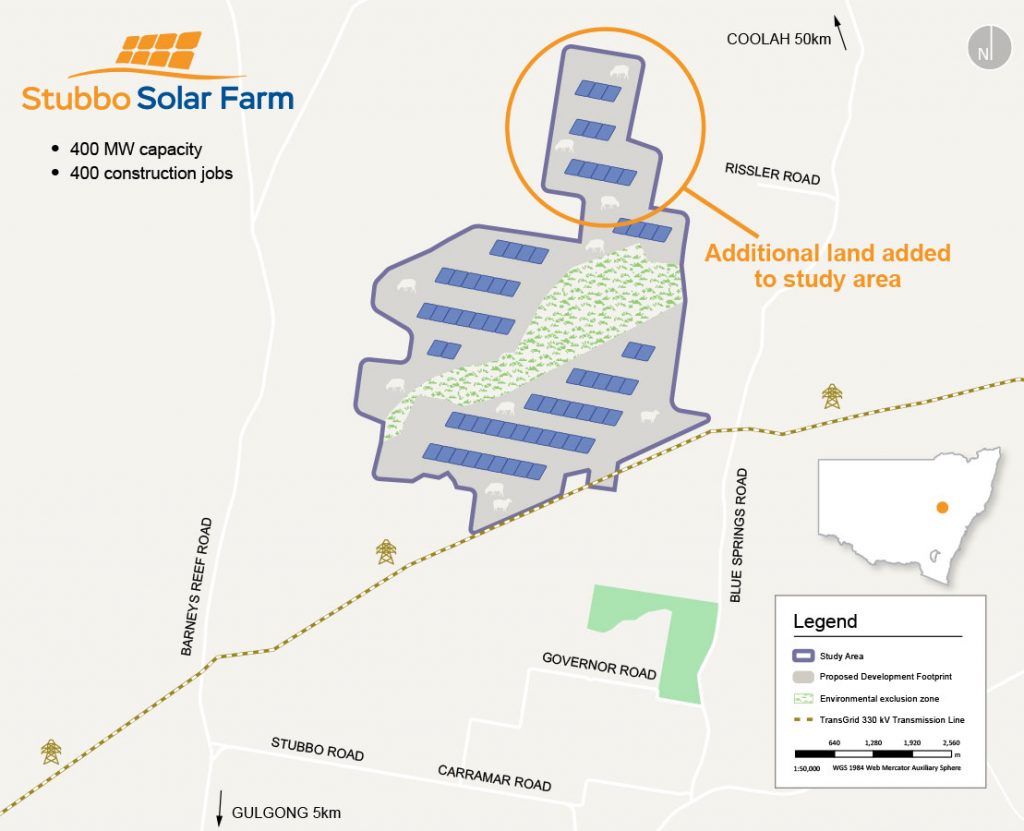An additional section of grazing land has been added to the study area for the 400 megawatt Stubbo Solar Farm, after ongoing discussions with the local landowners. The 250 hectare parcel of land is north of the existing 1,500 hectare study area site, between Merotherie and Rissler Roads.
The capacity and number of solar panels are not expected to increase as a result of the change, however the additional land will give us more flexibility to manage technical constraints and avoid potential environmental impacts as part of our final site design. This includes avoiding areas with bushland.
The project scoping report that was submitted to the NSW Department of Planning, Industry and Environment (DPIE) as part of the assessment process will be updated to reflect the change. Our project neighbours have been notified of the change to the study area as part of our community engagement.
Work is also continuing on the environmental assessments for the Stubbo Solar Farm, including biodiversity surveys and Aboriginal heritage studies. We will be working with eight Registered Aboriginal Parties (RAPs) who are expected to begin field work and surveys with local archaeologists from mid-August.

Project background
Stubbo Solar Farm is a 400-megawatt (MW) renewable energy generator that is being proposed across a 1,750 hectare study area of mostly cleared sheep grazing land.
The gently undulating land across the site will allow rows of photovoltaic panels to be installed with enough height and space for sheep to graze in and around the panels. They will provide welcome shade and protection to grazing animals from the hot summer sun.
The solar farm will produce about one million megawatt hours of electricity each year, enough energy to power 150,000 typical NSW homes. It will help reduce greenhouse gas emissions by more than 600,000 tonnes of CO2 each year, equivalent to taking 190,000 cars off the road.
The technical and economic feasibility of a battery energy storage system is being investigated as part of the project to help provide power on demand and to help maintain the stability of the local electricity network. The solar farm can connect to the existing 330kV electricity transmission network.

